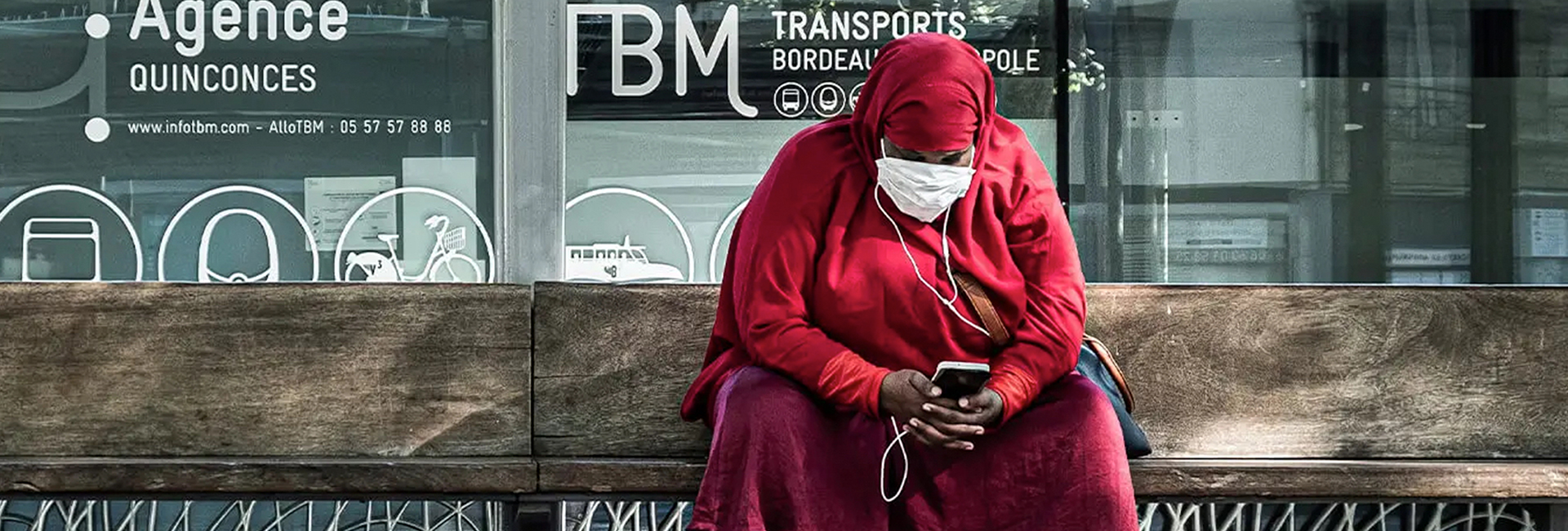COVID-19 is driving customers online, placing fresh emphasis on brands’ online channels. Here’s how to adapt your digital presence for the current situation – and beyond.
Internet users worldwide are predicted to spend 1.25 billion years online in 2020. And that was before the global coronavirus lockdown began.
Mobile app downloads and usage have been growing quickly across the board. People under quarantine have looked for digital alternatives to their out-of-home activities and for new ways to stay entertained. Over the first 10 weeks of the year, Google’s global share of Android app sales rose 5% to $360 million. Apple’s share of iPhone app sales grew 18% to $690 million.
With shops and offices closed and with social distancing likely in play for a long time to come as restrictions relax, businesses have been forced to adapt to a digital way of life. Global consumers are clear: they want brands to play their part. Only 8% want advertising to stop, and 75% say they want brands to keep them informed.
To communicate effectively with your customers during this period, you’ll need to adapt your digital presence. Here’s what to consider.
WEBSITE
For many brands, your website is your most important online asset. Customers will use it to find out how you’re adjusting your business to the crisis – don’t rely solely on email or social.
Within a few weeks of lockdown, most brands updated available services, deliveries, and returns policies. Where possible, they built in eCommerce functionality. And they highlighted health precautions to help customers feel comfortable ordering online.
After sending out messaging around COVID-19, it might be tempting to stop there. But new research shows that 47% of global consumers want brands to go further, e.g. by supporting hospitals through donations of money or equipment.
Concerns vary by market, too. For example, 90% of Germans expect brands to protect their employees and supply chain. Whatever you’re doing, make sure you communicate because your community wants to know.
Brands are also using their websites to entertain and inform audiences. Nike has created a page to support their Play Inside campaign and engage customers. This includes useful articles for customers, an invitation to compete in the “Living Room Cup,” and links to relevant products. Offering free courses is another popular tactic – and of course, removing content that may now be off-key in the wake of COVID-19.
INTERNATIONAL SEO
Search engines play an important part in the customer journey. Ranking on the first Google results page will get you roughly a third of clicks. Once you drop onto page two, it’s just 1%.
Recognizing this, Google released new features and recommendations to help businesses keep customers informed during the coronavirus period. It’s worth taking advantage of these, as well as updating title tags and meta descriptions to reflect changes to your business.
Marketers around the world are pausing or reviewing their marketing activities. This unexpected downtime could be a good opportunity to review the (often overlooked) technical elements of your international SEO strategy.
An SEO audit can help boost your organic rankings by identifying technical and on-page factors that are holding you back. Fixing technical issues (like missing hreflang tags) makes your site easier for Google to index, and your content easier to find. And correcting on-SERP factors like missing meta descriptions improves your chances of being found.
Now more than ever, it’s important to understand in-market search trends and make sure you’re not left behind. For international websites, simply translating keywords won’t cut it. International keyword research is essential because it digs deep into user intent to target your audience more effectively and can inform your international content strategy.
International SEO is a medium-term investment in your site. It won’t produce results overnight. But building on (or strengthening) your search presence now will ensure your brand stays relevant as the crisis continues – and beyond.
PPC
As SEO takes time to deliver results, PPC remains a quick and effective way to refine your digital presence.
With many companies pausing their advertising efforts as COVID-19 impacts their businesses, PPC ad volume is down by over 50%. This may present an opportunity to quickly bring in leads at below-average cost, although the devil’s in the data. Competition for high-demand keywords (like “bread maker”) remains high, while Google has restricted ads around outbreak-related keywords.
Optimizing your paid search ads for the crisis based on international search trends will be important. The good news is PPC results are quickly measurable and well suited to a changing business and marketing environment.
Taking a more long-term view, some marketers are also using PPC to build (or maintain) brand awareness while their core business may be on the down-low. This is a smart move, putting them in a good position to quickly rebuild their sales funnel as business resumes.
However you approach international PPC, remember to review and update your ads so they’re in line with changes to your services and deliver an appropriate tone. And make full use of ad extensions to maximize the amount of ad copy at your disposal.
SOCIAL MEDIA
People are spending more time online, and this of course includes social media. But it’s not business as usual – user behavior is rapidly changing. Here are some of the main trends around the world.
VIDEO’S DOMINANCE GROWS
Video has dominated online for several years. The coronavirus crisis has further accelerated the trend.
In February, YouTube usage soared across several of the worst-affected countries. Italy saw 20x growth in the volume of content watched. Germany ranked second, with 11x growth over the same period. Live-streaming increased by 37% in China during their coronavirus outbreak.
However, this figure varies greatly by generation. Millennials and Gen Z are most likely to turn to video. And even without professional production studios, creating video content is important to younger audiences as 18-29% upload their own material.
NEWS IS ALL-CONSUMING
Unsurprisingly, people of all ages are consuming more news content. For Gen X and baby boomers, 72% are tuning in to coverage more regularly.
There’s a growing demand for social media content to be fact-checked, too. Around two-thirds of global users would like social media companies to do more, with demand highest from China’s WeChat users. Stay ahead of the game by attributing factual information and safety messages to the proper sources.
CHANGING IMAGERY
Social media ads now feature 27% fewer images that show social interaction. Instead, running water and washing hands dominate. For international audiences, consider that hygiene advice varies. For example, wearing face masks is more widespread in some markets than others.
A good social media strategy moves your relationships with your customers forward. It gives you crucial feedback you might not otherwise hear. This means a post-and-ghost approach isn’t wise. Invest in community management and talk to your audience. Prioritize engagement over sales, and show your customers you’re here to help.
FINAL THOUGHT
The global picture continues to shift rapidly. Adapting your international website and digital presence will help you with short-term wins while setting yourself up for long-term success. It’ll also allow you to stay relevant and connected to your customers while you refine your strategy as things progress.


